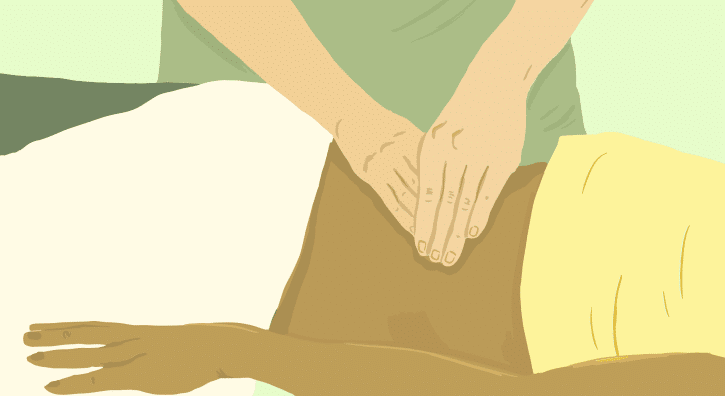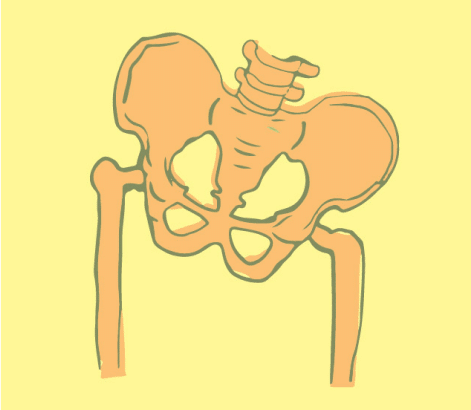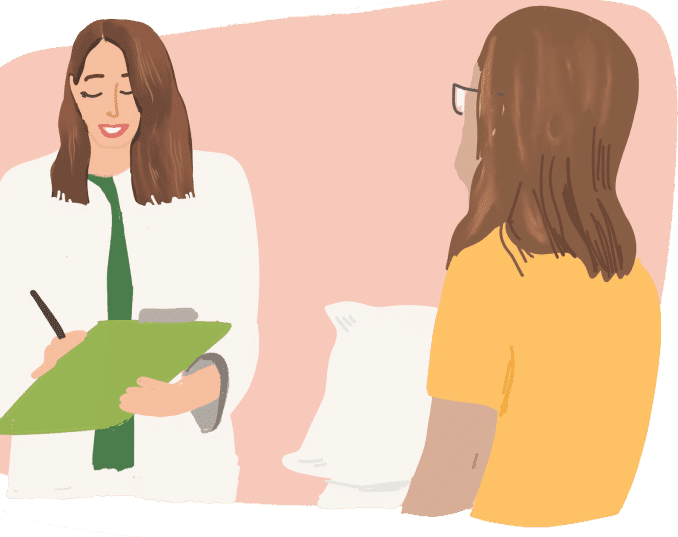

Symptoms
- Women may feel pain in the form of burning, pressure, soreness, or throbbing in the perineum, vulva, anal opening, or vaginal region
- Complaints often include pain during intimacy, hypersensitivity in tight clothes, and the inability to sit for prolonged durations
- Workouts, stretches, or other movements may increase pelvic discomfort
- Urinary problems such as painful urination, urgency, frequent peeing, or leakage might occur simultaneously
- Gastrointestinal concerns such as irregular stools, bloating, or constipation may also be present
- Triggers vary—some women experience pain with tampon use or sex, while others have no known provocation
- Frequency can be unpredictable, with some having symptoms daily and others only occasionally

Symptoms
- Women may feel pain in the form of burning, pressure, soreness, or throbbing in the perineum, vulva, anal opening, or vaginal region
- Complaints often include pain during intimacy, hypersensitivity in tight clothes, and the inability to sit for prolonged durations
- Workouts, stretches, or other movements may increase pelvic discomfort
- Urinary problems such as painful urination, urgency, frequent peeing, or leakage might occur simultaneously
- Gastrointestinal concerns such as irregular stools, bloating, or constipation may also be present
- Triggers vary—some women experience pain with tampon use or sex, while others have no known provocation
- Frequency can be unpredictable, with some having symptoms daily and others only occasionally

Associated Diagnoses
Diagnoses such as Endometriosis, Vulvodynia, Interstitial Cystitis/Painful Bladder Syndrome, Pudendal Neuralgia, Lichen Sclerosus, Lichen Planus, and Irritable Bowel Syndrome are associated with pelvic pain and pelvic floor dysfunction.


Causes of Pelvic Pain
- Frequent urinary tract or vaginal infections combined with disorders affecting skin, digestion, or reproductive health
- Pelvic floor dysfunction is frequently found in those with chronic pelvic pain complaints
- Use of specific medications, including hormone suppressants, birth control pills, and acne treatments linked to gynecological disorders
- Pelvic surgeries—whether related to birth, organ repair, or hysterectomy—may cause lasting dysfunction
- Injuries affecting the bones, joints, or soft tissues of the pelvis or lower spine
- Structural irregularities such as scoliosis, sacroiliac joint misalignment, hip asymmetry, or leg length differences
- Vaginal deliveries, which can overstretch or damage the pelvic floor muscles and nerves
- Menopause-induced changes in hormone levels and tissue elasticity
- Trauma involving the genitals, including culturally practiced cutting or mutilation
Causes of Pelvic Pain
- Frequent urinary tract or vaginal infections combined with disorders affecting skin, digestion, or reproductive health
- Pelvic floor dysfunction is frequently found in those with chronic pelvic pain complaints
- Use of specific medications, including hormone suppressants, birth control pills, and acne treatments linked to gynecological disorders
- Pelvic surgeries—whether related to birth, organ repair, or hysterectomy—may cause lasting dysfunction
- Injuries affecting the bones, joints, or soft tissues of the pelvis or lower spine
- Structural irregularities such as scoliosis, sacroiliac joint misalignment, hip asymmetry, or leg length differences
- Vaginal deliveries, which can overstretch or damage the pelvic floor muscles and nerves
- Menopause-induced changes in hormone levels and tissue elasticity
- Trauma involving the genitals, including culturally practiced cutting or mutilation

Diagnostic Challenges
Pelvic pain in women often goes unrecognized or misunderstood for extended periods. In fact, studies indicate that it takes about five years, on average, for a proper diagnosis—and for those with Endometriosis, it can take up to 11 years. This long delay occurs largely because the symptoms can easily be confused with more frequently diagnosed conditions like urinary tract infections, yeast infections, STIs, or bladder disorders. Many women endure unnecessary treatments that offer little improvement while the real cause—pelvic floor dysfunction—remains undetected. Standard tests often yield inconclusive results, frustrating both patients and providers. By the time women reach pelvic floor physical and occupational therapy, many have never even heard of the pelvic floor, much less understood its relevance to their chronic symptoms.
Diagnostic Challenges
Pelvic pain in women often goes unrecognized or misunderstood for extended periods. In fact, studies indicate that it takes about five years, on average, for a proper diagnosis—and for those with Endometriosis, it can take up to 11 years. This long delay occurs largely because the symptoms can easily be confused with more frequently diagnosed conditions like urinary tract infections, yeast infections, STIs, or bladder disorders. Many women endure unnecessary treatments that offer little improvement while the real cause—pelvic floor dysfunction—remains undetected. Standard tests often yield inconclusive results, frustrating both patients and providers. By the time women reach pelvic floor physical and occupational therapy, many have never even heard of the pelvic floor, much less understood its relevance to their chronic symptoms.
Treatment:
How We Can Help You

Living with persistent pelvic pain can feel isolating, but if you’re in Encino, a pelvic floor physical and occupational therapy evaluation could be the breakthrough you’ve been looking for. This in-depth session goes beyond symptom management—it reviews your complete medical story, explores past interventions, and identifies what has (or hasn’t) worked. We know how emotionally taxing it is to seek help repeatedly without getting results. Your physical and occupational therapists will assess various elements of your health, including muscular tone, connective tissue sensitivity, nerve activity, joint mobility, and movement dynamics. Based on this thorough exam, we’ll walk you through the underlying causes of your discomfort and lay out a tailored treatment strategy that includes immediate steps and achievable long-term goals. Most women complete their therapy over the course of 12 weeks, attending once or twice weekly and continuing their progress through custom-designed home exercises. We also coordinate care with your wider medical team to ensure a holistic approach to healing. Our goal is to support you in rediscovering comfort, mobility, and emotional peace.

Treatment:
How We Can Help You
Living with persistent pelvic pain can feel isolating, but if you’re in Encino, a pelvic floor physical and occupational therapy evaluation could be the breakthrough you’ve been looking for. This in-depth session goes beyond symptom management—it reviews your complete medical story, explores past interventions, and identifies what has (or hasn’t) worked. We know how emotionally taxing it is to seek help repeatedly without getting results. Your physical and occupational therapists will assess various elements of your health, including muscular tone, connective tissue sensitivity, nerve activity, joint mobility, and movement dynamics. Based on this thorough exam, we’ll walk you through the underlying causes of your discomfort and lay out a tailored treatment strategy that includes immediate steps and achievable long-term goals. Most women complete their therapy over the course of 12 weeks, attending once or twice weekly and continuing their progress through custom-designed home exercises. We also coordinate care with your wider medical team to ensure a holistic approach to healing. Our goal is to support you in rediscovering comfort, mobility, and emotional peace.
How Can We Help You?
Have a question or want to share your thoughts? We encourage you to complete the form found below. Don’t forget to add your email address so our team can follow up with a timely and direct reply. Every submission is treated with care, and your information will remain fully confidential.

Join The Newsletter. Win a copy of our book, “Pelvic Pain Explained!”
We love getting to know our website visitors. Please tell us a little bit about yourself and get the latest info via PHRC e-newsletter!
*Subscribers automatically eligible to win our book, “Pelvic Pain Explained.”
Pelvic Pain Explained aims to bring clarity to a confusing condition—tracing the underlying causes of pelvic pain and exposing the diagnostic challenges that delay treatment for so many. It also confronts the flood of treatment options that often lack clear guidance and delves into the emotional and relational burdens of coping with a condition others can’t see.


